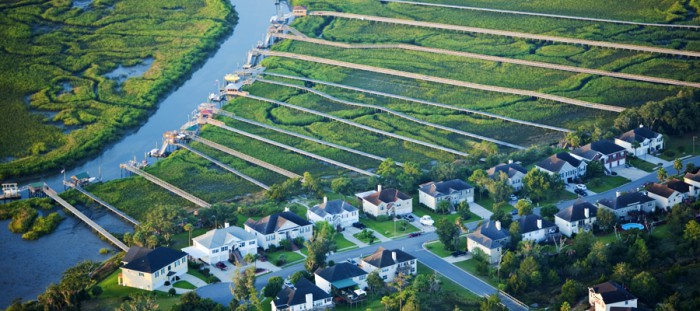This comes from our friends at the Southern Environmental Law Center.
Admired worldwide for its stunning beauty and rich biological diversity, the Georgia coast encompasses a lacework of barrier islands, mud flats, tidal creeks, blackwater rivers, freshwater wetlands, and some 378,000 acres of salt marsh. Though it has largely escaped the ravages of massive resort development, this special region faces a perfect storm of threats, including lax enforcement of environmental laws, the sell-off of timberlands to developers, and intense growth pressures that continue to mount even in today’s weak economy.
These pressures have brought the Georgia coast to a tipping point. If we fail to counter them, some of America’s most cherished natural resources will be lost forever.
Saving the Georgia coast is one of the toughest conservation challenges we face in the South today, and it is also one of SELC’s highest priorities. To defend this ecological gem, we have launched a comprehensive initiative that draws on all our skills and expertise.
– What’s at Stake
Many people are surprised to learn that Georgia harbors one-third of the salt marsh remaining on the East Coast. Most of the marsh is held by the state—not as the state’s own property, but “in trust for the public.” Thus, the marshes are a public resource, and one of incredible value. These vast expanses of grasses and meandering tidal creeks are not only beautiful; they serve as nurseries for marine life and as vital buffers against storms.
Dotting the marsh are more than 1,650 islands, called “marsh hammocks,” that provide a secluded sanctuary for wildlife. Sheltering the marshes are 14 barrier islands rimmed with more than 100 miles of white sandy beaches.
Inland wetlands along the coast are an important resource for people and wildlife alike: they improve water quality, reduce flooding, and provide habitat for an array of wild creatures. The ocean waters off the Georgia coast are prime calving grounds for the North Atlantic right whale—one of the rarest marine mammals on the planet and one of several endangered species that make their home in this region, including manatees, wood storks, and sea turtles, among others.
For more information about SELC’s Georgia Coast Initiative visit their website at: http://www.southernenvironment.org
photo provided by Robert LLewellyn

